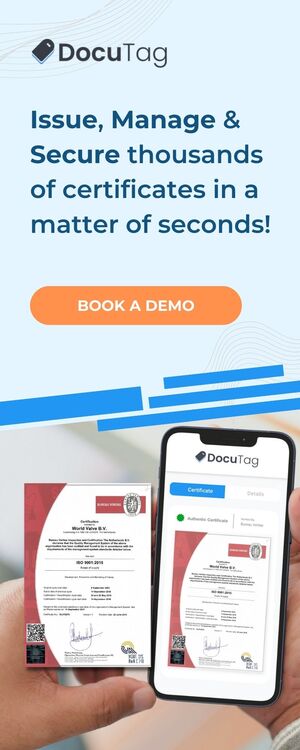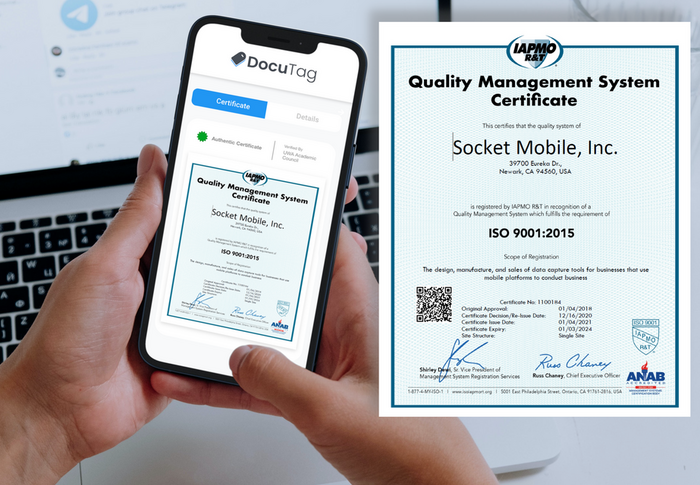We have heard about fake cosmetics, fake bags, and fake medicines, but have you thought about fake food?
Recently on April 2021, a Malaysian influencer known as Khairul Aming discovered that his ‘sambal’ product was counterfeited. ‘Sambal’ is basically mashed or blended cillies, typically mixed with shallots or some other flavor-enhancing ingredients. It is a very common dish to be served alongside the main meals in Malaysia and Indonesia.
In this case, the ‘sambal’ was faked, not in terms of turning out to be something other than food. The buyers still get chilies in jars, but the buyers were tricked into believing that they purchased the ‘sambal’ produced by Khairul Aming.
Maybe a fake side dish doesn’t sound that bad, does it? However, do you know that even formula milk for babies also gets counterfeited? Imagine spending hours researching the product with the best ingredients to fit your baby’s needs, just to find out that you gave your vulnerable baby fake powder milk.
A Danish formula milk brand, Let’s Eco, uses BrandTag to ensure the customers receive genuine products.
What to Expect From Fake Food

The problem with fake food products is the fact that when they can lie about the brand, they can lie about practically anything, especially the ingredients, manufacturing process, and quality standard.
Let’s discuss the risks of consuming fake food products in detail.
1. Questionable Ingredients
The consumers would be lucky if the counterfeiter uses the same ingredients. If they do use the same raw materials, most likely cheaper and lower quality ones were chosen to get maximum profit.
The less preferable case is the counterfeiters replace the ingredients with synthetic colorings, flavorings, or powder to achieve a similar taste and texture to the original. In the worst-case scenario, they use illegal ingredients that may harm the consumers.
2. Unknown Quality Control
Sometimes, we buy a food product because of the guarantee of the cleanliness and quality control involved in the product’s makings, such as handled by workers who wear gloves, product sealing, and using filtered water.
As in Khairul Aming’s case, the product founder already guaranteed that all of his ‘sambals’ are freshly made every single day to ensure his customers get to enjoy his product for a long period. That was why one of the fake ‘sambal’ buyers was very disappointed to find the product he received in a stale, inedible condition.
3. Shady Halal Status
For Muslims, the Halal guarantee is very important, as it is related to their faith. Asking ‘is this product halal?’ will be the first thing in making a choice in food product purchase.
Basically, Halal refers to clean food that is not mixed with ingredients forbidden in Islam, typically swine or unslaughtered animals. Consuming non-Halal food is believed to contaminate and weaken the Muslim faith.
This is why any news on Halal fraud will cause outrage to Muslim consumers, such as the Halal meat cartel scandal discussed in BV@M’s Blockchain Awareness Program in which LuxTag participated.
4. Downgrading The Original Brand
Counterfeits may not only harm the consumers, but they also inflicted damage to the original brand’s reputation, especially if the consumers relate the bad quality of the fake products to the original Brand.
In fact, the original brand has to bear the loss of revenue that is supposed to come from the purchasers of the counterfeited products.
How to Avoid Fake Food

You can avoid consuming fake food products by being careful in your purchase:
- Always opt to buy from the official store or reseller listed by the brand’s website.
- Always compare the products you are buying with the product listed on the brand’s website.
- Check product packaging for silly errors, such as typos, misaligned, or weirdly proportioned visuals.
- Scan the barcode or QR code on the packaging to check its validity
You can also use BrandTag to check a product’s authenticity.
How to Protect Your Products from Counterfeiters
The responsibility of taking down counterfeiters does not fall onto the customer’s shoulders only. As a brand owner, you must take all precautions to discourage counterfeiters from aiming at your products.
1. Patent & Legal Register
This first step is the most crucial protection of your brand. No matter how popular you already are and how sophisticated your product packaging is, if your product is not yet patented, you cannot take any legal actions towards the people who counterfeit your product.
This was what MHAM experienced when their product went viral, whereby an entity started producing identical products then claimed MHAM as a counterfeit brand. The issue was only resolved once MHAM officially registered its product under the Malaysian Ministry of Health.
2. Product Citizenship
Product Citizenship is basically granting unique identities to your products with the implementation of smart packaging. Meanwhile, smart packaging is a packaging method to improve the quality of the contents or to enable interaction with the consumers. An example of a smartly packaged product is a product printed with a QR code.
This way, your customers can easily verify the authenticity of your products simply by scanning their packaging. You can give the identities by batch, type, or variations. However, the more specific it is, the more secure your products will be.
If you are wondering if you can DIY your own smart packaging, Luxtag conducted a free webinar to demonstrate how you can do so! Learn about the webinar here.
3. Track & trace
Tracking and tracing your smartly packaged products will help you to efficiently notice any unusual activities that may indicate counterfeit activity, such as having one product ID be scanned more than a hundred times within a short duration or from random locations.
4. Make your customers aware of your smart packaging
Having smart packaging is pointless if nobody scans or realizes it. You can try these three simple tips to ensure the consumers scan your products: make it obvious, make it rewarding, and include reviews.
5. Raise counterfeit awareness
According to our survey, 4 out of 10 people bought counterfeits even though they know that they are purchasing fake products. That being said, there may be some people who admire your brand but opt to purchase the counterfeits due to the lower price.
Thus, you should make the effort to raise awareness on how counterfeit is harming the brand, the industry, and the growth of innovation.
An Anti-Counterfeit Solution for Both Consumer and Brands

BrandTag to the rescue! BrandTag is a Software-as-a-Solution (SaaS) that allows your products to announce their authenticity through their smart packaging and protect themselves from being counterfeited.
As a brand owner, you will experience these things when you use BrandTag:
- Authenticity verification
All your customers have to do is scan the QR code! They don’t need to take a picture or inspect the products before emailing them to you to ensure the product’s authenticity. You will save a lot of resources on customer services!
- Real-time product insights
You will see real-time analysis of the scanning activities of your products, including frequency & location. You can use this information to tailor your marketing and focus on the preferences of those more popular places or products.
- Engage & Promote
You can include the product’s story, latest promotion, customer reward program, vouchers, and your 5-star ratings. The customers have no chance to hesitate in making a purchase!
- Customization & Consistency for Bulk Production
You decide what your customers will see. You can customize the color, theme, product image, and more so that they’ll suit your brand. Plus, you only have to do it once! While every single product has its own unique QR code, it’ll still maintain the same image that reflects a particular series or batch.
Let your product do the work for you.
Combating counterfeiters is exhausting, we get it. That’s why we developed BrandTag. With BrandTag, your products will promote their authenticity and protect themselves from being counterfeited, with just a scan!







